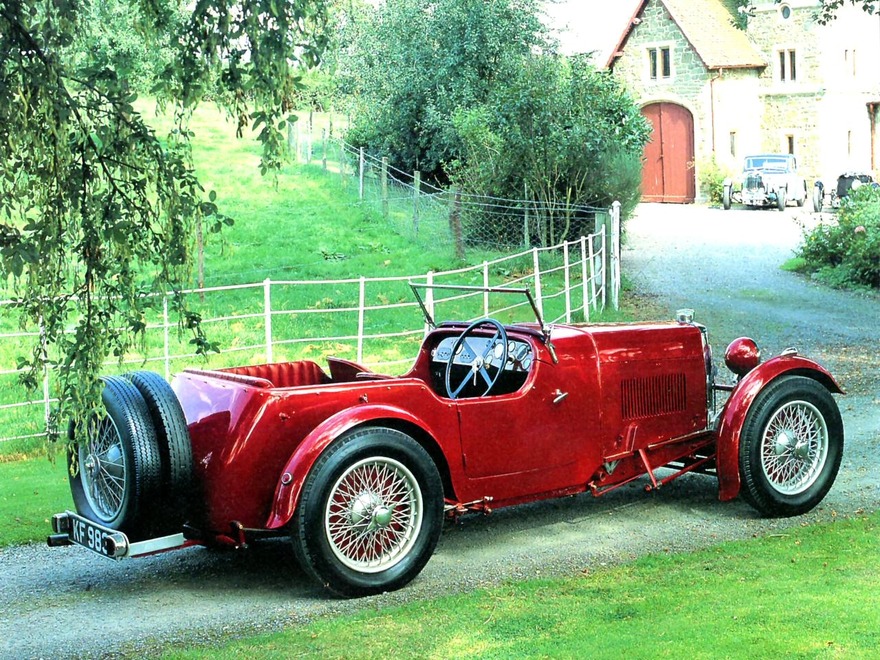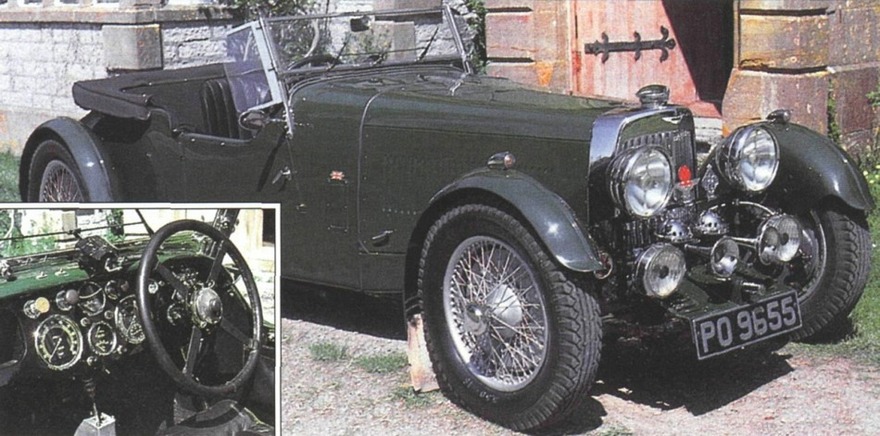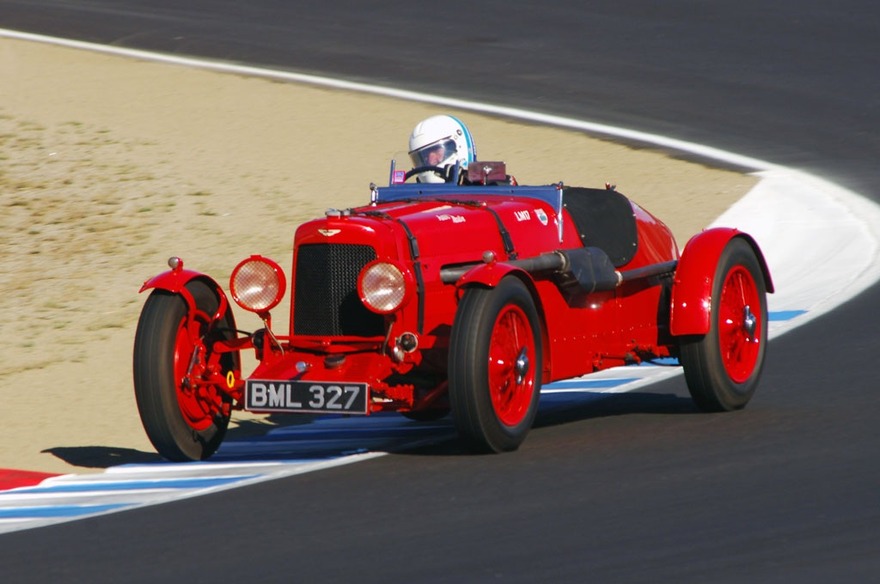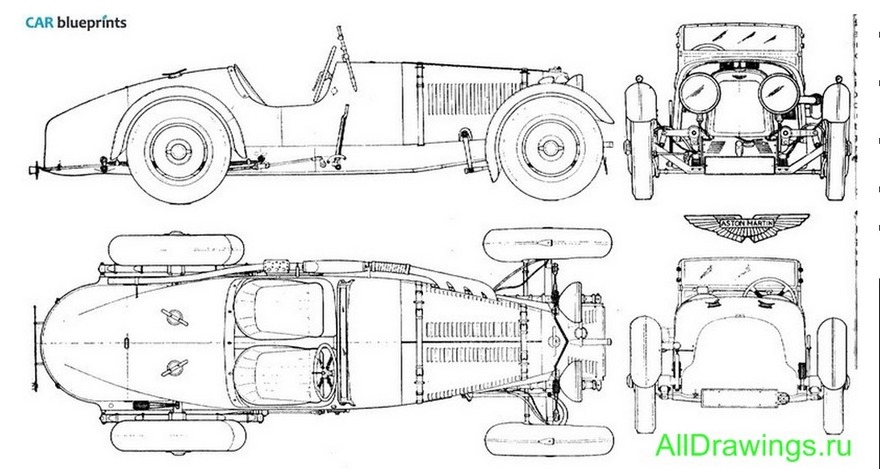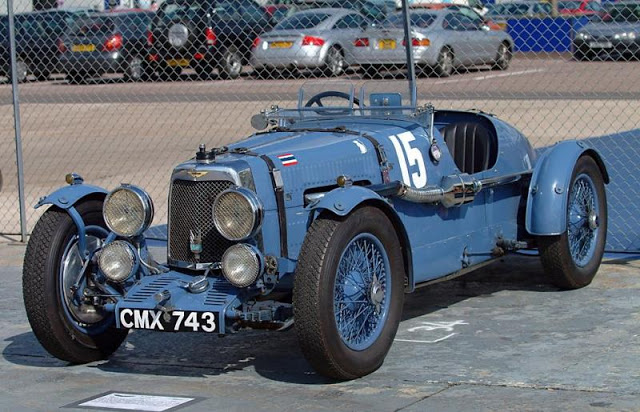In the beginning of the previous century one wealthy Englishman built several sports cars out of sheer enthusiasm. By the mid-1920s a dozen of his company’s workers built around 50 vehicles. Although the beginning of the interesting (and successful as we know by now) history of Aston Martin was misty and changeable like the weather in London, but as the saying goes, success was waiting for it round the corner. That very wealthy enthusiast from London, Lionel Martin, won the race at Aston Hill near Aston Clinton behind the wheel of the own-produced car Singer 10. Apparently, the first part of the company’s now famous name appeared due to this event.
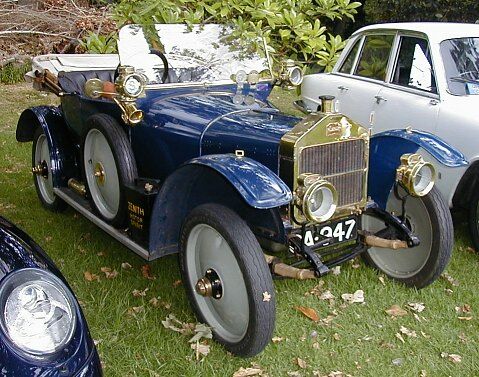
In 1922 the final batch of wonderful 4-cylinder 16-valve race cars rolled off the production lines of the company founded by Bamford & Martin. Two years later the factory was closed down going into bankruptcy.
Later the firm was acquired by W.S. Renwick and А.С. Bertelli and things took a favourable turn. Five peaceful post-war years were very beneficial. The most important role in the fate of the British automaker was played by the new engine and moving the factory to Feltham. International was a very successful model developed by the Bertelli brothers. In 1927 Aston Martin revealed a car with an overhead-cam four-cylinder 1.5-litre engine featuring dry-sump lubrication developed by А.С. Bertelli while the body was designed by Enrico Bertelli.
Curious society, which was trying to forget all the horrors of the war, saw a supercar which set a new standard for an entire series of race cars created from 1929 through 1932 after the London Motor Show held in 1927.
Aston Martin International models came into possession of 81 by no means poor citizens of London. Later the company produced the International Le Mans model with Moss gearbox and ENV rear axle. One of the major achievements was the use of a bevel final drive instead of a worm gear. Within two years the company sold 72 Le Mans units with lower bonnet line and external exhaust system.
In 1929 the Aston Martin International won a reputation by setting new standards in road behaviour. Meanwhile, the racing version of this car allowed Bertelli to stay competitive in Grand Prix races in those years. It was the beginning of one of the most popular Aston Martin series. The one with the 11.9 HP name was highly praised by the Autocar magazine: “It is one of those cars which make the heart of a car enthusiast beat joyfully. And not just because its behaviour excites general admiration on an open road, but also because of unspeakably delicate manners of its running gear”.
Two-seat sports pressed steel body was a statement asking to go faster and faster on the wet London’s asphalt. Though this model could reach the speed of only 135 km/h and the engine was delivering only 70 hp, more than a hundred lucky men afforded an opportunity of driving the piping hot cars built by Renwick and Bertelli. Most of all the attention of meticulous Englishmen was drawn to gear shifting lever placed in a small guide slot.
During the period between World Wars I and II Aston Martin was a car fitted for a boring life without any start or finish. But was it possible for an English soul to grow old and freeze? Not without a reason did Aston Martin become the brand most often associated with the best British spy ever. A symbol of style and luxury, meant for secret exploration of all dark alleys of London and racing tracks, could not make its bow without scoring a victory. The Bertelli brothers were ambitious enough to make millions of people desperate to see a sport version of Aston Martin.
A small car with the same 1.5-litre engine, where four cylinders were pinching more than 70 horses, set the beginning of the era of Aston Martin. Within two years the company had developed several versions of the car ready to participate in the famous 24 hour of Le Mans race. Three cars were in the 1935 team — LM18, 19, and 20 all based on the third-generation chassis. One of the cars clinched 12th position in the overall standings and was 5th in its class. Rumours were that one of the competitive companies had even made a picture of it for the Coys Festival. Three racing fighters looked like the 1934 models.
Bertelli admitted that those were the best and his favourite cars. Car experts consider LM models in the range from 18 to 21 as the high-water mark of pre-war sports car manufacturing industry.
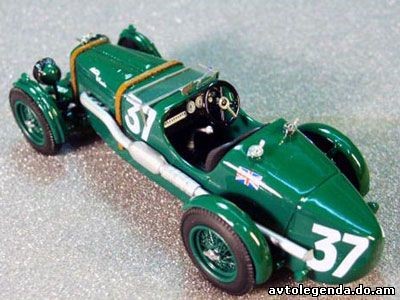
Chief designer of the best pre-war model was Bertelli himself. In addition to that, he was also a racing driver. Aston Martin Ulster was created with desire and adrenaline. It embodied all racing experience which Bertelli had had by that time. This technological wonder was able to accelerate to 170 km/h which was a stunning speed at that time.
This model features many details which might seem strange to a car enthusiast today. The acceleration pedal is placed in the middle while its regular place on the right is taken by brake pedal. Gear shifting is contra lateral to what we have now.
Under its long bonnet, typical of all roadsters, we can see familiar engine with four cylinders. One of the distinctive features of the 1.5-litre powerplant is that it has two carburettors and delivers 80 hp. There is no such thing as miracle and though its top speed of 161 km/h looks ridiculous nowadays, the car’s behaviour on the track is just perfect even today. Those lucky men who had a chance to drive this vintage car have boldly stated: “Contrary to all expectations, the car has perfect steering and is rather stable on the road”.
But if you still decide to get behind the wheel of this beautiful car, just remember that the moment of ignition is adjusted manually right on the steering wheel. What is even more important, there are no synchronisers in the gearbox meaning that you will not be able to start driving an Aston Martin Ulster without throttling.
This car is highly rated among the collectors so you should be ready to pay at least one million for the sport racing model.
The history of the pre-war Aston Martin cars is a long way from dullness to adrenaline. It commenced and ended with a wreck. World War II came as a black stripe upon all car manufacturers. British factories of Aston Martin were used to produce spare parts for military airplanes and no one cared about racing supercars. But the legend was not destined to dissolve in the post-war darkness.
In 1947, under the authority of a large industrial group David Brown, which produced tractors and agricultural equipment, Aston Martin rose like a phoenix from the ashes of war. And over the years this marque rose to international fame. And that was done with a contribution made by the “most famous British secret agent ever”.

